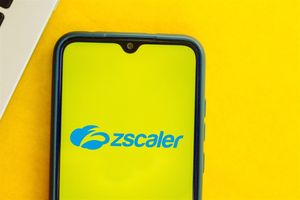Severe vaso-occlusive events were eliminated for 94% (30/32) of evaluable patients and all VOEs were eliminated for 88% (28/32) of evaluable patients between 6 and 18 months post-infusion
LYFGENIA is the most deeply studied gene therapy for sickle cell disease with the most patients treated and longest follow-up
Management to host conference call today, December 8, 2023, at 4:15 p.m. ET
bluebird bio, Inc. (Nasdaq: BLUE) (“bluebird bio” or “bluebird”) today announced the U.S. Food and Drug Administration (FDA) has approved LYFGENIA™ (pronounced as ‘lif-JEN-ee-uh’) (lovotibeglogene autotemcel), also known as lovo-cel, for the treatment of sickle cell disease in patients ages 12 and older who have a history of vaso-occlusive events (VOEs). LYFGENIA is a one-time gene therapy that has the potential to resolve vaso-occlusive events and is custom-designed to treat the underlying cause of sickle cell disease.
"Bringing LYFGENIA to people living with sickle cell disease is a milestone that bluebird has been working toward for almost a decade—and one that members of the sickle cell disease community have been waiting on for much longer,” said Andrew Obenshain, chief executive officer, bluebird bio. “LYFGENIA has the potential to have a transformational impact for patients who currently live under the shadow of unpredictable and debilitating vaso-occlusive events. This approval also marks bluebird’s third ex vivo gene therapy approved by the FDA for a rare genetic disease and second FDA approval for an inherited hemoglobin disorder, cementing our position as a gene therapy leader.”
“We’re enthusiastic at the Sickle Cell Disease Association of America Inc. about the FDA’s approval of this therapy, which could change the lives of people and families affected by sickle cell disease,” said Regina Hartfield, president and CEO of the Sickle Cell Disease Association of America Inc. “As the national advocacy organization for people with sickle cell, we’re strongly supportive of the new potentially curative option for treatment and excited for the future.”
“People living with sickle cell disease face potentially devastating health consequences, diminished quality of life, and harmful stigma as a result of their disease,” said Julie Kanter, M.D., a LYFGENIA investigator and director of the University of Alabama Birmingham Adult Sickle Cell Clinic and associate professor in the Division of Hematology and Oncology. “Today we can celebrate the availability of a potentially transformative new therapeutic option made possible by the incredible courage of patients and families who participated in clinical studies.”
“Sickle cell disease was the first genetic disorder to be characterized at the molecular level a half-century ago and today – after decades of waiting – we finally have a therapy that addresses the underlying cause of this devastating disease,” said John Tisdale, MD, Chief, Cellular and Molecular Therapeutics Branch at the National Heart, Lung, and Blood Institute (NHLBI), who served as principal investigator on the HGB-206 study and was a key collaborator throughout the clinical development program. “The development of this therapy has been marked by transparency and collaboration that laid the groundwork for other technologies to follow, and the NIH is extremely pleased to have supported this advance.” NHLBI is part of the National Institutes of Health.
Sickle cell disease is a complex and progressive genetic disease associated with unpredictable and debilitating vaso-occlusive events (VOEs).1,2,3,4 In sickle cell disease, high concentrations of sickle hemoglobin (HbS) in red blood cells (RBCs) cause them to become misshapen, sticky and rigid, with a shorter life span, which manifests acutely as hemolytic anemia, vasculopathy and vaso-occlusion. The burden associated with VOEs is pervasive and can affect every aspect of life for patients and their families and caregivers.
LYFGENIA works by permanently adding a functional β-globin gene to patients’ own hematopoietic (blood) stem cells (HSCs). Durable production of adult hemoglobin with anti-sickling properties (HbAT87Q) is expected following successful engraftment. HbAT87Q has a similar oxygen-binding affinity to wild-type HbA, limits sickling of red blood cells, and has the potential to reduce vaso-occlusive events (VOEs).
LYFGENIA will be available at bluebird bio’s established network of Qualified Treatment Centers (QTCs), which receive specialized training to administer complex gene therapies like LYFGENIA. Information on bluebird’s QTC network, as well as personalized support focused on the needs of each patient throughout their treatment journey, is available through bluebird’s patient support program, my bluebird support. Patients can call 833-888-NEST (833-888-6378) or visit mybluebirdsupport.com for more information. bluebird plans to make the therapy available in early 2024.
LYFGENIA was granted Priority Review in June 2023. The Company did not receive a Rare Pediatric Disease Priority Review Voucher as part of the review. LYFGENIA was previously granted orphan drug designation, fast track designation, regenerative medicine advanced therapy (RMAT) designation, and rare pediatric disease designation.
Clinical Data Supporting Approval of LYFGENIA
The FDA approval of LYFGENIA builds on decades of research into lentiviral vector gene addition therapy and the largest clinical development program of any gene therapy for sickle cell disease.
The label is based on data from patients from the Phase 1/2 HGB-206 study. Safety data supporting the application includes data from 54 patients who initiated stem cell collection. Efficacy for LYFGENIA was supported by data from 36 patients in the Phase 1/2 HGB-206 Group C study following enhancements to the treatment and manufacturing processes made through the course of the clinical development program. 32 patients were evaluable for the endpoints of complete resolution of VOEs and severe VOEs in the 6-18 months post-infusion including 8 adolescent patients. In this cohort:
- Severe vaso-occlusive events were resolved in 30/32 patients (94%)
- 28/32 patients (88.2%) experienced no vaso-occlusive events at all
In the studies, VOEs are defined as episodes of acute pain with no medically determined cause other than a vaso-occlusion, lasting more than two hours and severe enough to require care at a medical facility. This includes acute chest syndrome requiring oxygen treatment and/or blood transfusion, acute hepatic sequestration, acute priapism lasting 2 hours and requiring care at a medical facility and acute splenic sequestration. sVOEs require a 24-hour hospital stay or emergency room visit, or at least two visits to a hospital or emergency room over a 72-hour period, with both visits requiring intravenous treatment; all VOEs of priapism are also considered sVOEs.
The most common adverse reactions ≥ Grade 3 (incidence ≥ 20%) were stomatitis, thrombocytopenia, neutropenia, febrile neutropenia, anemia, and leukopenia. As previously reported, three patients died during LYFGENIA clinical trials; one from sudden cardiac death due to underlying disease and two from acute myeloid leukemia who were treated with an earlier version of LYFGENIA using a different manufacturing process and transplant procedure. Please see LYFGENIA Important Safety Information below, including a Boxed Warning for Hematologic Malignancy.
Patients treated with LYFGENIA in bluebird bio-sponsored clinical studies will be monitored for a total of 15 years through a long-term safety and efficacy follow-up study (LTF-307).
Conference Call Details
bluebird bio will hold a conference call for analysts and investors today December 8, at 4:15 p.m. ET.
To access the call via telephone, please register at this link: https://register.vevent.com/register/BI50feb64355294f899507004a73e5ffb8 to receive a dial in number and unique PIN to access the live conference call.
The live webcast of the call can be accessed by visiting the “Events & Presentations” page within the Investors & Media section of the bluebird website at http://investor.bluebirdbio.com. A replay of the webcast will be available on the bluebird website for 90 days following the event.
About LYFGENIA™ (lovotibeglogene autotemcel) or lovo-cel
LYFGENIA is a one-time ex-vivo lentiviral vector gene therapy approved for the treatment of patients 12 years of age or older with sickle cell disease and a history of vaso-occlusive events (VOEs). LYFGENIA works by adding a functional β-globin gene to patients’ own hematopoietic (blood) stem cells (HSCs). Durable production of adult hemoglobin with anti-sickling properties (HbAT87Q) is possible following successful engraftment. HbAT87Q has a similar oxygen-binding affinity to wild-type HbA, limits sickling of red blood cells and has the potential to reduce and VOEs.
The Phase 1/2 HGB-206 study of LYFGENIA is ongoing with enrollment and treatment complete; and the Phase 3 HGB-210 study evaluating LYFGENIA is ongoing. bluebird bio is also conducting a long-term safety and efficacy follow-up study (LTF-307) for patients with sickle cell disease who have been treated with LYFGENIA in bluebird bio-sponsored clinical studies.
Indication
LYFGENIA is indicated for the treatment of patients 12 years of age or older with sickle cell disease and a history of vaso-occlusive events (VOEs).
Limitations of Use
Following treatment with LYFGENIA, patients with α-thalassemia trait ( α3.7/ α3.7) may experience anemia with erythroid dysplasia that may require chronic red blood cell transfusions. LYFGENIA has not been studied in patients with more than two α-globin gene deletions.
Important Safety Information
Boxed WARNING: HEMATOLOGIC MALIGNANCY
Hematologic malignancy has occurred in patients treated with LYFGENIA. Monitor patients closely for evidence of malignancy through complete blood counts at least every 6 months and through integration site analysis at Months 6, 12, and as warranted.
Hematologic Malignancy
Hematologic malignancy has occurred in patients treated with LYFGENIA (Study 1, Group A). At the time of initial product approval, two patients treated with an earlier version of LYFGENIA using a different manufacturing process and transplant procedure (Study 1, Group A) developed acute myeloid leukemia (AML). One patient with α-thalassemia trait (Study 1, Group C) has been diagnosed with myelodysplastic syndrome (MDS).
The additional hematopoietic stress associated with mobilization, conditioning, and infusion of LYFGENIA, including the need to regenerate the hematopoietic system, may increase the risk of a hematologic malignancy. Patients with sickle cell disease have an increased risk of hematologic malignancy as compared to the general population.
Patients treated with LYFGENIA may develop hematologic malignancies and should have lifelong monitoring. Monitor for hematologic malignancies with a complete blood count (with differential) at least every 6 months for at least 15 years after treatment with LYFGENIA, and integration site analysis at Months 6, 12, and as warranted.
In the event that a malignancy occurs, contact bluebird bio at 1-833-999-6378 for reporting and to obtain instructions on collection of samples for testing.
Post-Marketing Long Term Follow-Up Study: Patients who intend to receive treatment with LYFGENIA are encouraged to enroll in the study, as available, to assess the long-term safety of LYFGENIA and the risk of malignancies occurring after treatment with LYFGENIA by calling bluebird bio at 1-833-999-6378. The study includes monitoring (at pre-specified intervals) for clonal expansion.
Delayed Platelet Engraftment
Delayed platelet engraftment has been observed with LYFGENIA. Bleeding risk is increased prior to platelet engraftment and may continue after engraftment in patients with prolonged thrombocytopenia. Two patients (4%) required more than 100 days post treatment with LYFGENIA to achieve platelet engraftment.
Patients should be made aware of the risk of bleeding until platelet recovery has been achieved. Monitor patients for thrombocytopenia and bleeding according to standard guidelines. Conduct frequent platelet counts until platelet engraftment and platelet recovery are achieved. Perform blood cell count determination and other appropriate testing whenever clinical symptoms suggestive of bleeding arise.
Neutrophil Engraftment Failure
There is a potential risk of neutrophil engraftment failure after treatment with LYFGENIA. Neutrophil engraftment failure is defined as failure to achieve three consecutive absolute neutrophil counts (ANC) ≥ 0.5 × 109 cells/L obtained on different days by Day 43 after infusion of LYFGENIA. Monitor neutrophil counts until engraftment has been achieved. If neutrophil engraftment failure occurs in a patient treated with LYFGENIA, provide rescue treatment with the back-up collection of CD34+ cells.
Insertional Oncogenesis
There is a potential risk of lentiviral vector-mediated insertional oncogenesis after treatment with LYFGENIA.
Hypersensitivity Reactions
Allergic reactions may occur with the infusion of LYFGENIA. The dimethyl sulfoxide (DMSO) or dextran 40 in LYFGENIA may cause hypersensitivity reactions, including anaphylaxis.
Anti-retroviral Use
Patients should not take prophylactic HIV anti-retroviral medications for at least one month prior to mobilization and until all cycles of apheresis are completed. There are some long-acting anti-retroviral medications that may require a longer duration of discontinuation for elimination of the medication. If a patient is taking anti-retrovirals for HIV prophylaxis, confirm a negative test for HIV before beginning mobilization and apheresis of CD34+ cells.
Hydroxyurea Use
Patients should not take hydroxyurea for at least 2 months prior to mobilization and until all cycles of apheresis are completed. If hydroxyurea is administered between mobilization and conditioning, discontinue 2 days prior to initiation of conditioning.
Iron Chelation
Drug-drug interactions between iron chelators and the mobilization process and myeloablative conditioning agent must be considered. Iron chelators should be discontinued at least 7 days prior to initiation of mobilization or conditioning. Do not administer myelosuppressive iron chelators (e.g., deferiprone) for 6 months post-treatment with LYFGENIA. Non-myelosuppressive iron chelation should be restarted no sooner than 3 months after LYFGENIA infusion. Phlebotomy can be used in lieu of iron chelation, when appropriate.
Interference with PCR-based Testing
Patients who have received LYFGENIA are likely to test positive by polymerase chain reaction (PCR) assays for HIV due to integrated BB305 LVV proviral DNA, resulting in a possible false-positive PCR assay test result for HIV. Therefore, patients who have received LYFGENIA should not be screened for HIV infection using a PCR-based assay.
Adverse Reactions
The most common adverse reactions ≥ Grade 3 (incidence ≥ 20%) were stomatitis, thrombocytopenia, neutropenia, febrile neutropenia, anemia, and leukopenia.
Three patients died during LYFGENIA clinical trials; one from sudden cardiac death due to underlying disease and two from acute myeloid leukemia who were treated with an earlier version of LYFGENIA using a different manufacturing process and transplant procedure (Study 1, Group A).
Pregnancy/Lactation
Advise patients of the risks associated with myeloablative conditioning agents, including on pregnancy and fertility.
LYFGENIA should not be administered to women who are pregnant, and pregnancy after LYFGENIA infusion should be discussed with the treating physician.
LYFGENIA is not recommended for women who are breastfeeding, and breastfeeding after LYFGENIA infusion should be discussed with the treating physician.
Females and Males of Reproductive Potential
A negative serum pregnancy test must be confirmed prior to the start of mobilization and re-confirmed prior to conditioning procedures and before LYFGENIA administration.
Women of childbearing potential and men capable of fathering a child should use an effective method of contraception (intra-uterine device or combination of hormonal and barrier contraception) from start of mobilization through at least 6 months after administration of LYFGENIA.
Advise patients of the options for fertility preservation.
Please see full Prescribing Information for LYFGENIA including Boxed WARNING and Medication Guide.
About bluebird bio, Inc.
bluebird bio is pursuing curative gene therapies to give patients and their families more bluebird days.
Founded in 2010, bluebird has been setting the standard for gene therapy for more than a decade—first as a scientific pioneer and now as a commercial leader. bluebird has an unrivaled track record in bringing the promise of gene therapy out of clinical studies and into the real-world setting, having secured FDA approvals for three therapies in under two years. Today, we are proving and scaling the commercial model for gene therapy and delivering innovative solutions for access to patients, providers, and payers.
With a dedicated focus on severe genetic diseases, bluebird has the largest and deepest ex-vivo gene therapy data set in the field, with industry-leading programs for sickle cell disease, β-thalassemia and cerebral adrenoleukodystrophy. We custom design each of our therapies to address the underlying cause of disease and have developed in-depth and effective analytical methods to understand the safety of our lentiviral vector technologies and drive the field of gene therapy forward.
bluebird continues to forge new paths as a standalone commercial gene therapy company, combining our real-world experience with a deep commitment to patient communities and a people-centric culture that attracts and grows a diverse flock of dedicated birds.
For more information, visit bluebirdbio.com or follow us on social media at @bluebirdbio, LinkedIn, Instagram and YouTube.
LYFGENIA and bluebird bio are trademarks of bluebird bio, Inc.
Forward-Looking Statements
This press release contains “forward-looking statements” within the meaning of the Private Securities Litigation Reform Act of 1995. All statements that are not statements of historical facts are, or may be deemed to be, forward-looking statements, such as statements regarding the therapeutic potential of LYFGENIA, including the transformative and potentially curative impact it may have for patients; the commercialization of LYFGENIA, including without limitation, its availability, and the timing thereof, at QTCs; and the availability of services offered by my bluebird support program to support patient treatment. Such forward-looking statements are based on historical performance and current expectations and projections about bluebird’s future goals, plans and objectives and involve inherent risks, assumptions and uncertainties, including internal or external factors that could delay, divert or change any of them in the next several years, that are difficult to predict, may be beyond bluebird’s control and could cause bluebird’s future goals, plans and objectives to differ materially from those expressed in, or implied by, the statements. No forward-looking statement can be guaranteed. Forward-looking statements in this press release should be evaluated together with the many risks and uncertainties that affect bluebird bio’s business, particularly those identified in the risk factors discussion in bluebird bio’s Annual Report on Form 10-K for the year ended December 31, 2022, as updated by its subsequent Quarterly Reports on Form 10-Q, Current Reports on Form 8-K and other filings with the Securities and Exchange Commission. These risks and uncertainties include, but are not limited to: delays and challenges in bluebird’s commercialization and manufacturing of its products; the internal and external costs required for bluebird’s ongoing and planned activities, and the resulting impact on expense and use of cash, has been, and may in the future be, higher than expected which has caused bluebird, and may in the future cause bluebird to use cash more quickly than it expects or change or curtail some of its plans or both; substantial doubt exists regarding bluebird’s ability to continue as a going concern; bluebird’s expectations as to expenses, cash usage and cash needs may prove not to be correct for other reasons such as changes in plans or actual events being different than its assumptions; the risk that the efficacy and safety results from bluebird’s prior and ongoing clinical trials will not continue or be seen in the commercial context; the risk of insertional oncogenic or other safety events associated with lentiviral vector, drug product, or myeloablation; and the risk that LYFGENIA will not be successfully commercialized. The forward-looking statements included in this document are made only as of the date of this document and except as otherwise required by applicable law, bluebird bio undertakes no obligation to publicly update or revise any forward-looking statement, whether as a result of new information, future events, changed circumstances or otherwise.
______________________________
1 Kato, et al. Nat Rev Dis Primers. 2018;4:(18010):1-22.
2 Powars DR, et al. Medicine. 2005;84(6):363–376.
3 Chaturvedi S, et al. Am J Hematol. 2018;93:1153–1160.
4 Elmariah H, et al. Am J Hematol. 2014;89(5):530-535.
View source version on businesswire.com: https://www.businesswire.com/news/home/20231208492260/en/
Contacts
Investors & Media:
Investors:
Courtney O’Leary, 978-621-7347
coleary@bluebirdbio.com
Media:
Jess Rowlands, 857-299-6103
jess.rowlands@bluebirdbio.com





